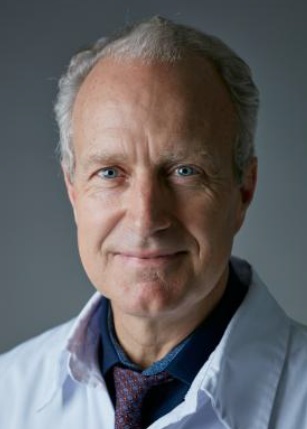This report was prepared by:
- Dr David Carballo, MD, MPH, Cardiologist, Geneva, Switzerland
- Professor François Mach, MD, Cardiologist, National CVD Prevention Coordinator for Switzerland
Dr David Carballo
Division of Cardiology, Department of Internal Medicine specialties, Geneva University Hospital, Switzerland
Contact: email

Professor François Mach
National CVD Prevention Coordinator for Switzerland
Director of the cardiology basic science laboratory at the Faculty of Medicine University of Geneva, Switzerland
Contact: email
Documents to download
Baseline information about Switzerland
Switzerland is a confederation of 26 cantons, with four national languages (German, French, Italian and Romansh); health care legislation is governed at the federal and cantonal level. Access to healthcare is universal through compulsory private health insurance for all residents, regulated by the Swiss Federal Law on Health Insurance. As of the end of 2015, the Swiss permanent resident population was 8,325 million, accounting for a 1.1 population growth compared to 2014. In 2015 there were 702 (586 men and 116 women) cardiologists out of a total of 35,325 physicians, accounting for 8.4 cardiologists per 100,000 inhabitants.
Health care
Access to healthcare is universal through compulsory private health insurance for all residents, regulated by the Swiss Federal Law on Health Insurance. Complementary insurance is available and allows access to uncovered treatment categories by the basic insurance.
Risk factors
In 2013, cardiovascular mortality represented 20.6% for 45-64 year old men and 12.9% for women, 29.2% for 65-84 year old men and 28.1% for women and 42% for 85 years and above men and 44.2% for women. According to data from the European Society of Cardiology Atlas of Cardiology, the overall mortality due to cardiovascular diseases (% of total deaths) is equal to 35%, with 1,515 per million people deaths due to ischemic heart disease and 832 due to stroke.
Data from the ESC Atlas of Cardiology:
The prevalence of:
- raised total cholesterol (≥ 5.0 mmol/L), total (% population) is equal 62.4% (year 2008)
- diabetes (% of population ages 20 to 79) is equal to 5.6% (year 2014)
- raised blood pressure, total (%population) is equal to 23.2% (year 2014)
- current smoking, female (% of adults) is equal to 20.9% (year 2012)
- current smoking, male (% of adults) is equal to 28.3% (year 2012)
- current obesity (BMI>= 30), total (% of adults) is 21.0% (year 2014)
- current overweight (BMI>= 25), total (% of adults) is equal to 58.2% (year 2014)
(Reference: ESC Atlas of Cardiology. Country profile: Switzerland. 2016, data from pilot phase)
Main actors
Primary cardiovascular (CV) prevention is mainly provided by general practitioner physicians where as secondary CV prevention is provided by cardiologists, health care providers such as nurses and physiotherapists. Specialised CV risk factor educational programs and smoking cessation programs are available in most University hospital settings.
Prevention activities
Prevention activities have been mainly centred around cantonal anti-smoking legislation, local primary prevention programs, health programs aimed at preventing and treating obesity as well as its direct consequences on health and morbidity and academic center based secondary prevention programs such as the structured secondary prevention program ELIPS, a multi-dimEnsionaL preventIon Program after Acute coronary Syndromes (ACS), aiming at improving the quality of care of patients post-ACS and thereby reducing related mortality and morbidity. The ELIPS intervention includes actions at the patient, healthcare provider and healthcare system levels aimed at improving patient outcomes through better adherence to post-ACS cardiac rehabilitation (CR) programs.
Cardiac Rehabilitation
Primary cardiovascular (CV) prevention is mainly provided by general practitioner physicians where as secondary CV prevention is provided by cardiologists, health care providers such as nurses and physiotherapists. Specialised CV risk factor educational programs and smoking cessation programs are available in most University hospital settings. Phase I secondary cardiovascular prevention is primarily delivered in the acute phase hospital setting during the five days following an acute coronary syndrome. Phase II cardiovascular prevention takes place in dedicated cardiac rehabilitation centers. According to the Swiss association of cardiovascular prevention and rehabilitation, there are 57 recognised ambulatory institutions and 12 stationary ones.
Aims for the future
Cardiovascular prevention in Switzerland is primarily based on secondary prevention programs and cardiac rehabilitation centers. There is a need for more emphasis on primary prevention programs and upstream public health interventions aimed at influencing societal level social determinants of health and promoting individual motivation at up taking healthy lifestyles. Promoting the implementation of current guidelines remains the major goal in Switzerland. Quality control, training of cardiologists in the field of cardiovascular prevention and proper certification are opportunities for the future. The further development of primary and secondary prevention programs should remain a priority with further public health campaigns promoting healthy lifestyles such as smoking cessation and sustained and regular physical activity as are currently recommended by national and European guidelines and World Health Organization policies papers.
Note: The content of this article reflects the personal opinion of the author/s and is not necessarily the official position of the European Society of Cardiology.

 Our mission: To reduce the burden of cardiovascular disease.
Our mission: To reduce the burden of cardiovascular disease.